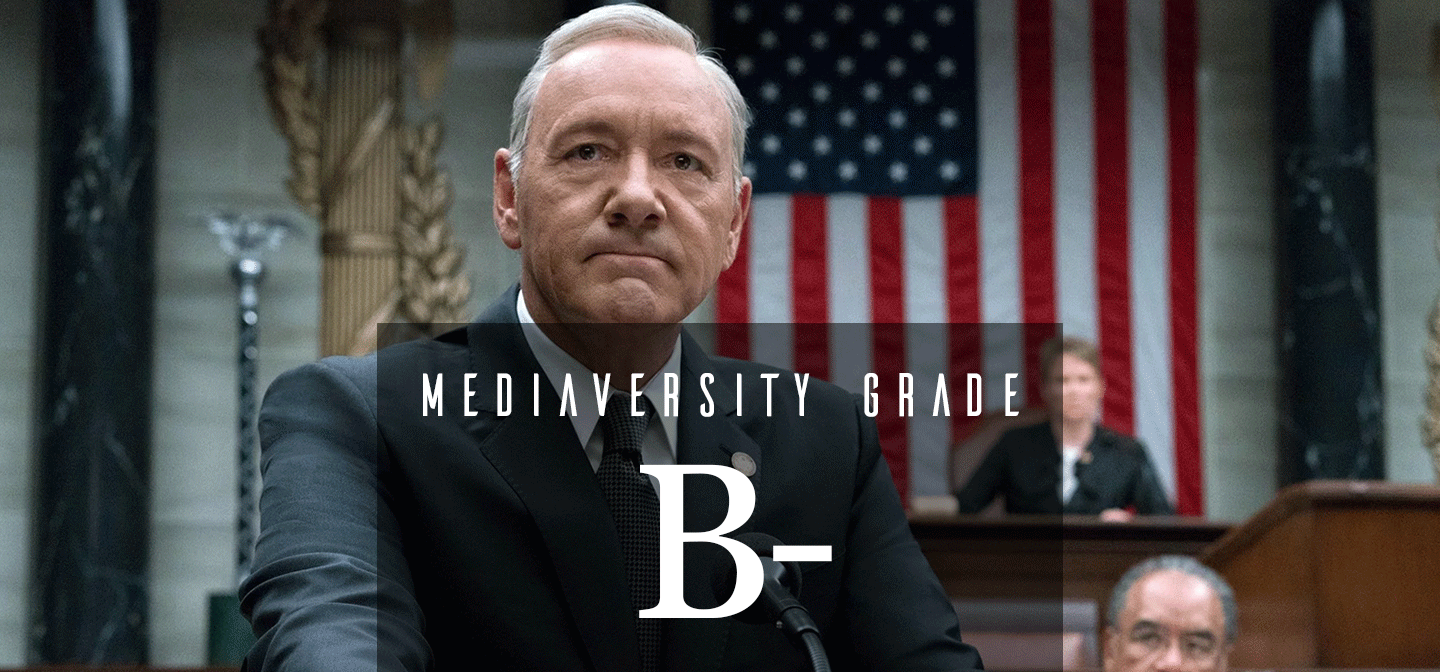Better Call Saul - Seasons 1-3
“Better Call Saul leaves entire swathes of people in the dustbin of tropes and stereotypes.”
Title: Better Call Saul
Episodes Reviewed: Seasons 1-3
Creator: Vince Gilligan 👨🏼🇺🇸 and Peter Gould 👨🏼🇺🇸
Writers: Vince Gilligan 👨🏼🇺🇸 (40 eps), Peter Gould 👨🏼🇺🇸 (40 eps), Gordon Smith 👨🏼🇺🇸 (22 eps), Ann Cherkis 👩🏼🇺🇸 (11 eps), and various ( 3 ♂, 2 ♀, all white)
Reviewed by Li 👩🏻🇺🇸
Technical: 3.75/5
Better Call Saul is a meditative exploration of two lightly linked story arcs. One follows criminals involved in the Albuquerque drug trade and the other, a story of a man’s inner struggle between good and evil and how that affects his relationship with his older brother.
Besides the nostalgia factor of the clichéd cartel storyline that will appeal to fans of Breaking Bad, it actually feels superfluous next to the much more intriguing personal journey—and exploration of moral ambiguities—that make up the latter arc. For that alone, the series is worth a watch.
Gender: 2/5
Does it pass the Bechdel Test? YES
Better Call Saul may technically pass the Bechdel Test, but only twice during all of Season 1 and twice again in Season 2. One of the instances: “How’s lunch?” “Fine.” “What’d you have?” “Turkey wrap.” Hardly deep.
The only woman with a substantial role is Kim Wexler, played by Rhea Seehorn. Her depiction in Season 1 is awful: She’s a lawyer and the sometimes-colleague, sometimes-lover of main character Jimmy McGill (Bob Odenkirk), but her small amounts of screen time see her cleaning up after men (literally, putting back a trash can Jimmy once knocks over during a tantrum) and playing a subordinate, hesitant, and follow-the-rules naysayer to Jimmy’s harebrained but more exciting schemes. This feeds straight into the stereotype that men are more creative, and I have no patience for shows that reinforce damaging views that have been revealed over and over again to be false.
Luckily, Season 2 begins to explore Kim’s depth as a capable lawyer and Season 3 is positive enough a portrayal that it bumps this score up a notch. In the third season, Kim lands a major client and although the client had to be gift-wrapped and hand-delivered by Jimmy, it nonetheless gifts us with multiple Bechdel Test-passing scenes where Kim discusses work with Paige (Cara Pifko), half of the husband-wife team behind client Mesa Verde.
Beyond Kim, representation of women is minimal. In Season 1, nearly all portrayals are sexualized and/or flawed, while Seasons 2 and 3 see more tempered depictions through minor characters like Rebecca (Ann Cusack), the wife of Jimmy’s brother, or Francesca (Tina Parker), the secretary of Kim and Jimmy. Still, these women are tangential to the main plots, unlike the bevy of male supporting characters who dominate the cast.
Race: 1.5/5
The depictions of people of color are awful. Unlike their white counterparts, we never get to see them portrayed both positively and with dimension, despite the fact that Hispanics make up the largest ethnic group in Albuquerque.
Mexican characters in Better Call Saul are all criminals, their only variation the degrees to which they are vilified. You either have well-meaning criminals like Nacho (Michael Mando), cerebral criminals like Gus (Giancarlo Esposito), fedora-wearing druglord criminals like Hector Salamanca (Mark Margolis), or outright caricatures like the coke-addicted, murderous brute Tuco Salamanca (Raymond Cruz).
As if trying to offset a robust cast of brown bad guys, Better Call Saul sprinkles golden-hearted angels into minor roles. Ernesto (Brandon K. Hampton) is a personal assistant who has a soft spot for the main character Jimmy. Nacho’s father is a hardworking small business owner who winds up getting dragged into the drug trade regardless. Neither display any dimensionality. The only reason this category is rated higher than the lowest possible score is due to the decent number of roles cast with Latino actors. It’s unfortunate that said roles are actively stereotypical, but capital flowing to Latino actors is better than none at all.
LGBTQ: 1/5
No clear depictions across thirty episodes and 700 listed IMDB characters. At about 45 minutes an episode, that’s roughly 22.5 hours of material without a single overtly queer relationship shown or even mentioned.
Bonus for Disability: +0.50
The thorough exploration of the electromagnetic hypersensitivity suffered by Jimmy’s brother Chuck (Michael McKean) is a fascinating look at the inexact science of so many afflictions that exist today. Chuck experiences the erosion of healthy relationships as loved ones struggle with the ambiguity of a non-diagnosable illness. Chuck doubly experiences the mental anguish of self doubt as he finds himself wondering if this physical pain is entirely made up in his own head. These difficulties feel imminently applicable to anyone suffering from an illness that has yet to be understood by modern medicine.
Deduction for Age: -0.50
Seniors make up the bulk of Jimmy’s clients across all three seasons as he specializes in elder law. Yet they are depicted as jello-eating, mall-walking, bingo-playing senile old women who are easily manipulated. And they are primarily women, for some reason. The show relishes painting Jimmy as the pied piper who leads these naive souls into whatever plan he has hatched. People over 60 have no sense of agency whatsoever in Better Call Saul, and it’s demeaning to watch them blithely written into child-like roles or punchlines when in reality, these are people who have lead long and textured lives.
Mediaversity Grade: D 2.06/5
Better Call Saul fits into the genre of “prestige television,” boldly slowing its pace and looking inwards for its best scenes and most effective story arcs. But in its single-minded pursuit of developing this strong interior world, creators Vince Gilligan and Peter Gould have left entire swathes of people—specifically, those who don’t look like them—in the dustbin of tropes and stereotypes.




